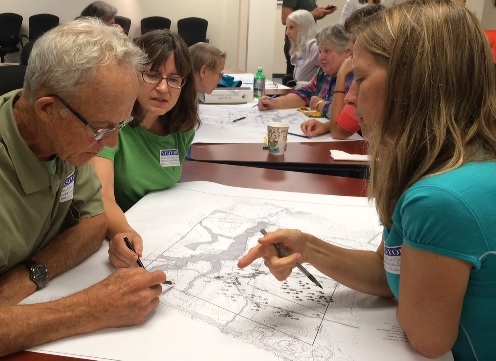Conservation Advisory Councils
In municipalities throughout New York, Conservation Advisory Councils (CACs) and Conservation Boards (CBs) serve as important advisory bodies to local governing boards, planning boards, and zoning boards of appeals.
By providing an environmental perspective on land-use proposals, comprehensive plans, stewardship of natural areas, and other issues, CACs contribute to local land use decision-making, conservation, and quality of life for residents in the community. And, since their mandate includes the development of a municipal inventory of natural areas and open space, they are uniquely positioned to provide the "big picture" view needed for natural resource-based planning.
How is a CAC or CB established?
CACs and CBs are established by a municipality under Article 12-F Section 239-x of NYS General Municipal Law and are also called "environmental commissions." A CAC may be established by ordinance or by local law and consists of 3-9 residents appointed by the local legislative body. Up to two appointees may be between the ages of 16 and 21.
Members should have a strong interest in the mission of the council, the time and willingness to work on CAC tasks, and ability to work cooperatively with other municipal agencies. It is helpful to have some members with knowledge and experience in the environmental sciences, planning, engineering, and law; however, there are no minimum professional qualifications. CAC members with an eagerness to learn are equally valuable and can attend training and educational opportunities to build their knowledge and skills.
CACs can become a Conservation Board (CB) by preparing an open space inventory that is then approved by the local governing board as the municipality's official index of open space. While still advisory in nature, CBs are more formally involved in review of land-use applications affecting areas listed in the index. This process is outlined in Article 12-F Section 239-y of NYS General Municipal Law.
How do CACs and CBs benefit local governments?
CACs and CBs provide a formal structure within local governments to advise on the development, management, and protection of local natural resources. Members of CACs and CBs may conduct policy research, deliver education programs, implement stewardship projects, and gather and distribute information to other town agencies, land-use applicants, and the general public. In particular, CACs are directed to keep an inventory and map of local open space (e.g, forests, fields, wetlands), which provides an essential foundation for community planning.
CACs and CBs also provide an invaluable service to time-strapped planning boards by contributing to environmental reviews. They can conduct site visits, analyze resources, document potential environmental impacts, and consider how natural areas on a site relate to surrounding resources.
Helpful Links
Recorded webinar about Conservation Advisory Councils and Boards from 2019
New York State Association of Conservation Commissions
Fact Sheet on Conservation Advisory Councils and Boards
Conservation Advisory Councils and Boards Guide (Westchester County Department of Planning 1997)


